Foot Management is a completely custom orthotic lab. Our accommodations are handmade and hand placed on our devices. We understand the proper locations for pads and cutouts. You may also specify any type of custom accommodation and specific location. We routinely do accommodations as marked on patient casts to give you the exact placement for specific needs. If you do not see an accommodation that fits your need, we can build it for you. Please feel free to call our staff at 1-800-HOT-FOOT and consult with them on any questions you may have.
Some of the accommodations listed here are not listed on our prescription form, you may specify them in the additional information area.
Heel Spur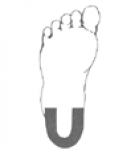 | A horseshoe pad is incorporated into the orthotic to relieve weight bearing at the site of the spur. |
Heel Raise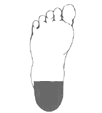 | EVA material is added to the bottom of the orthotic to give the prescribed amount of lift (3/8″ maximum recommended lift). |
Mortons Extension | A toe crest length is required. A piece of material is placed under the first ray so that it will accept more pressure during toe off, and thus reduce the pressure #2 accepts in a Mortons Toe. |
Metatarsal Raise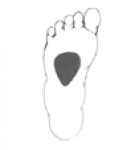 | An oval pad is placed just behind the heads of the 2nd, 3rd and 4th metatarsals to lift their shafts and help support the transverse arch. Standard (high) is 1/4″ thick, the medium is 3/16″ thick and low is 1/8″ thick. A toe crest length is highly recommended. |
Metatarsal Cutout | A toe crest length is needed. These are depressions to relieve pressure from the metatarsal heads as you prescribe. You need to tell us which met heads to pocket. |
Clips | This is a small rise in the edge of the orthotic, a higher side, to help hold the foot in the orthotic. Particularly good in the rigid orthotics. Highly recommended for a pes planus pronator to keep him/her from rolling medially over the orthotic. |
Wedges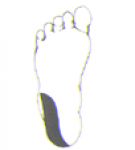 | A beveled piece of EVA placed on the bottom of the orthotic. A medial wedge would supinate, a lateral wedge would pronate; in doing so would help prevent the opposite. Wedges are used in our Semi-Rigid and Soft orthotics. |
Metatarsal Bar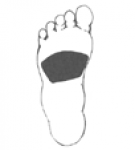 | Toe crest length is required. Similar to the met rise, this bar goes behind and picks up on the shafts of all five rays. |
Sesamoid Cut out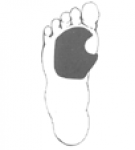 | Similar to metatarsal cut out: only the area beneath the sesamoids is pocketed. |
Dancers Pad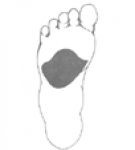 | Toe crest length is required. This is a pad that goes under and picks up the 2nd, 3rd, and 4th metatarsal heads and pockets the 1st and 5th. This is recommended for people who are on the balls of their feet twisting often (i.e. a tennis player). |
Padded Heel | Similar to padded undercover, this foam material is used only in the heel area for shock absorption on heel strike. |
Turf Toe Plate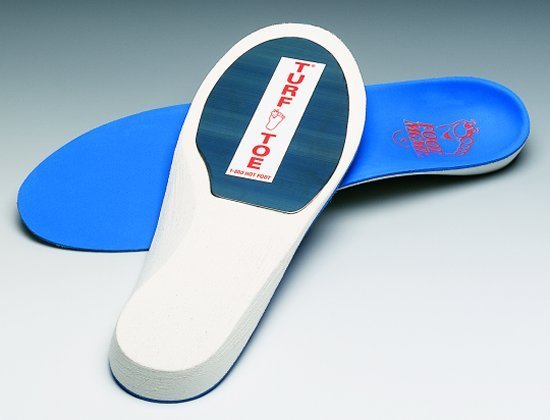 | Designed to control dorsiflexion at the MP Joints and to relieve pressure from the head of the first MP. A spring steel extension is laminated to one of our semi-rigid orthotics. This must be placed on a full-length orthotic only, with the option of a half or full plate. Also available as a postoperative appliance to limit forefoot dorsiflexion in a street or healing shoe. |
Modified Turf Toe Plate | Designed to control dorsiflexion at the MP Joints and to relieve pressure from the head of the first MP. This spring steel extension is laminated to one of our semi-rigid orthotics. The shape is modified from a standard plate so that only the area under sulcus has the plate the full width of the foot then it extends only up along the 1st ray. This must be placed on a full-length orthotic only, with the option of a half or full plate. |
| Nonskid Bottom | A rubber or plastic gripping material is added to the bottom of the device to prevent any slippage in the shoe. |
| Padded Undercover | Padding for the top of the orthotic. The foam material is used under the cover for a comfortable, shock-absorbing topping. You can specify 1.5mm or 3mm (3mm should only be used in an extra depth shoe). |
| Plantar Fascia Groove | A groove in the longitudinal arch which allows the fascia an area to rest while the arch is still being supported. This is good for patients with severe plantar fasciitis where the fascia is severely stretched. |

